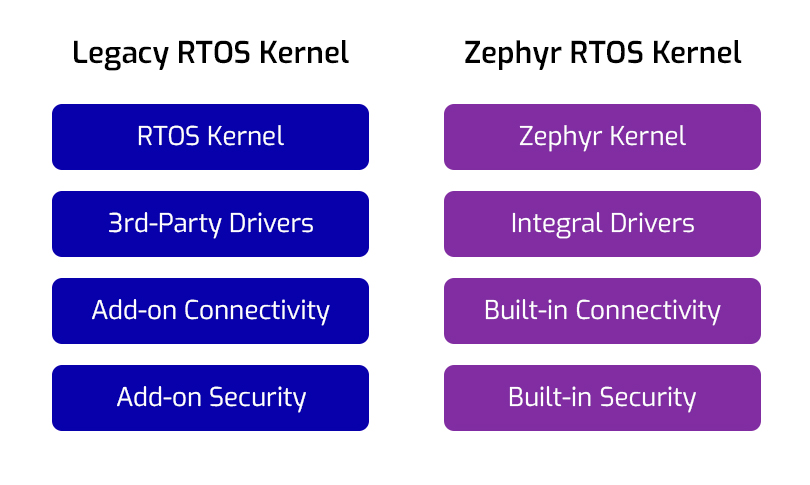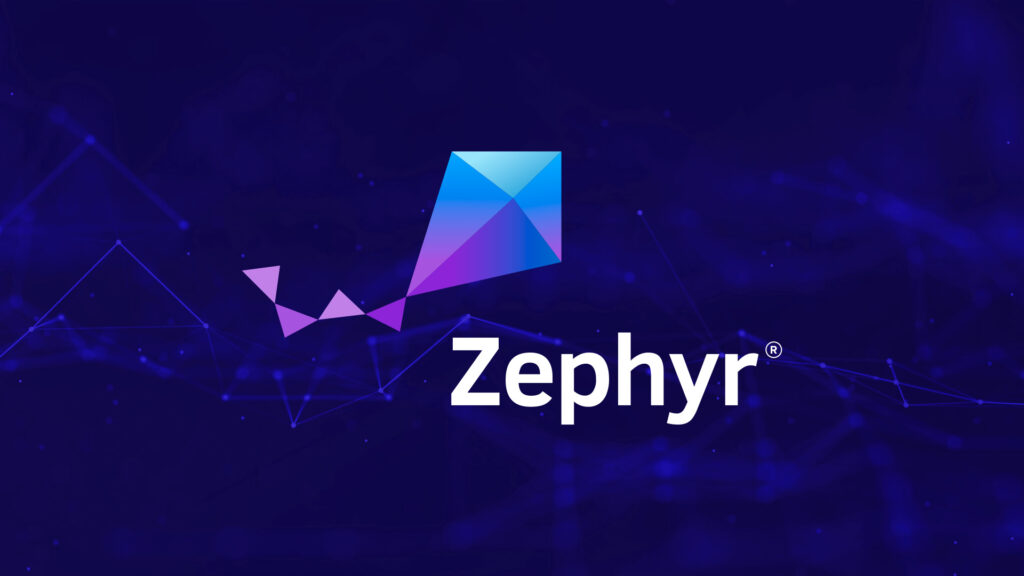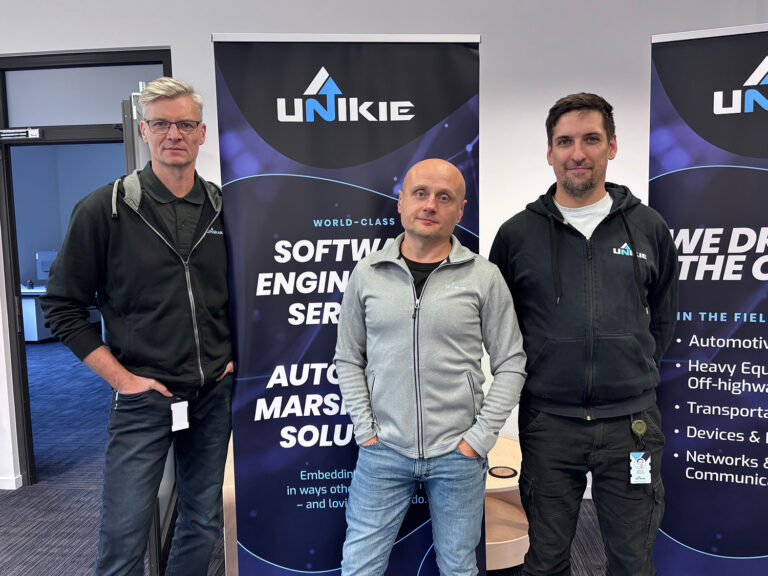The embedded systems landscape is evolving faster than ever. Devices that once operated in isolation now need to connect securely to the cloud, receive over-the-air (OTA) updates, and remain resilient in the face of growing cybersecurity threats. In industries like automotive, industrial automation, healthcare, and consumer electronics, this shift is driving a reevaluation of real-time operating system (RTOS) strategies.
Traditional RTOS options like FreeRTOS and ThreadX remain excellent for small microcontrollers and simple, single-purpose devices. However, they were not built for the complexity, and connectivity demands of modern products. Patching and stacking third-party libraries for networking and security often leads to fragile, hard-to-maintain solutions.
Zephyr RTOS, an open-source platform hosted by the Linux Foundation, was designed with today’s requirements in mind: modularity, connectivity, and security built in. We explore why Zephyr is increasingly the RTOS of choice for future-ready embedded systems, how it complements legacy solutions, and how Unikie helps businesses successfully adopt it.
Why Embedded Systems Need to Evolve
Embedded systems today live in ecosystems of connected devices, mobile apps, and cloud services. With these changes come new challenges:
- Security & Compliance
- Maintainability
- Scalability
- Faster Time-to-Market
RTOS Comparison
Zephyr complements rather than replaces legacy RTOS. FreeRTOS suits simple devices, but Zephyr is built for complex, connected, long-lifecycle products. The right RTOS shapes scalability, security, and maintainability—this table shows where Zephyr stands apart.
| Feature / RTOS | Zephyr | FreeRTOS | ThreadX | RIOT OS |
|---|---|---|---|---|
| License | Apache 2.0 | MIT | Microsoft Shared Source | LGPL |
| Backed by | Linux Foundation, Intel, NXP, Nordic | Amazon AWS | Microsoft | Universities & Open Source |
| Architecture | Modular, SMP-ready | Minimal RTOS | Deterministic | Microkernel |
| Security | Built-in MPU, TLS, OTA | Add-on only | Some built-in | Limited |
| Connectivity | Full IP, BLE, LoRa, 6LoWPAN | LWIP / FreeRTOS+TCP | Basic IP | Strong IoT focus |
| Memory Footprint | ~50–300 KB | ~10–50 KB | ~2–20 KB | Higher |
| Multi-core Support | Yes | No | No | No |
| Target Use Cases | Automotive, industrial, IoT | Small MCUs, PoC | Industrial/Azure IoT | Academic/Research |
Key Advantages of Zephyr RTOS
1. Unified and Scalable Architecture
Zephyr combines the RTOS kernel, middleware, device drivers, and protocol stacks in a single ecosystem.
Its Kconfig and CMake-based modular build system allows engineers to create a minimal image for ultra-low-power devices or a feature-rich configuration for multi-core processors.

2. Connectivity and IoT Readiness
Zephyr includes tested, integrated support for:
- IPv6, 6LoWPAN, MQTT, CoAP
- BLE, LoRa, and Wi-Fi
- Secure boot and OTA updates by design
- No more hunting for compatible stacks or worrying about how your TCP/IP implementation interacts with security layers
3. Security by Design
- Stack canaries and MPU-based memory isolation
- Encrypted firmware updates
- Native cryptographic libraries (TinyCrypt, mbedTLS)
- Architectural alignment with safety standards like ISO 26262
4. Modern Developer Experience
- Unified build and configuration system with CMake and Devicetree
- Standardized drivers to reduce vendor lock-in
- CI/CD friendly workflows and active community support
5. Strong Ecosystem & Backing
Zephyr is backed by major industry players, including Intel, Nordic, NXP, and STMicroelectronics. With 450+ supported boards across ARM, RISC-V, x86, and ARC, it provides flexibility for multi-platform product strategies. It supports a wide range of architectures, making it easier to transition from FreeRTOS or ThreadX, and integrates drivers, connectivity, and security into one cohesive platform.
Engineers can quickly get up to speed thanks to good documentation, tutorials, and active community support. It also integrates with GCC, LLVM, and CI/CD pipelines, streamlining the entire development process.
Real-World Applications at Unikie
One of Zephyr’s main strengths is that it makes SW application development faster and easier to maintain. This is where Unikie excels; we know Zephyr inside and out and help companies transition to Zephyr.
We also offer services for OEMs to build Zephyr-based custom applications and software, utilizing the built-in mechanisms and structuring it with modern CI/CD development pipelines for easy maintenance and AI-based testing practices, etc.
Unikie has applied Zephyr across industries:
Autonomous Systems
Secure, resilient drone systems with UTM integration
Embedded Systems Testing
Multi-processor platform testing with detailed QA workflows
FPGA & Gateway Development
Networking-intensive systems with Linux, C, and Python
Telecommunications
ARM-based embedded solutions for complex telecom environments
Customer case
Unikie has partnered with several semiconductor supplier companies to provide end-to-end services such as configuring chipsets for custom hardware using Zephyr’s device tree, and developing customer drivers aligned with the Zephyr Device Driver Model.
We have delivered specialized Zephyr RTOS solutions for chipsets, integrating hardware abstraction layers, building custom firmware, and enhancing performance and security.
Is your company developing with Zephyr? Let’s talk.
Resources
- Authors: Embedded Systems and IoT Experts at Unikie
- Unikie: https://www.unikie.com/
- https://www.zephyrproject.org/
- https://github.com/zephyrproject-rtos/zephyr
- https://docs.zephyrproject.org/



